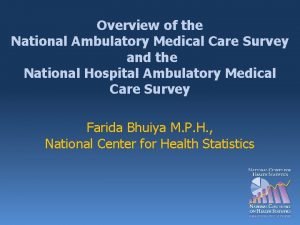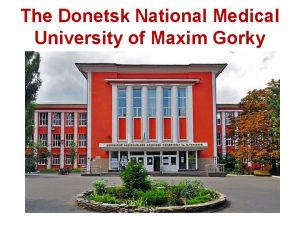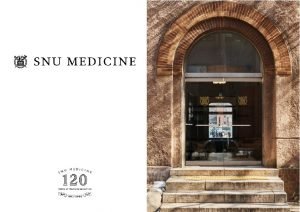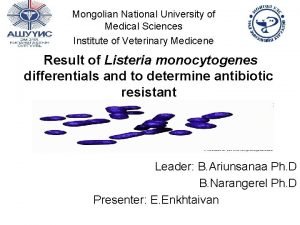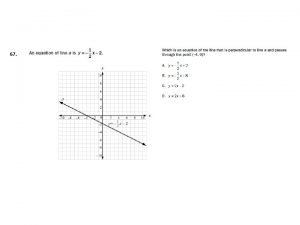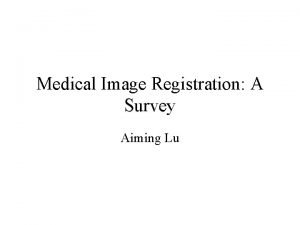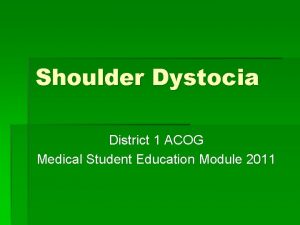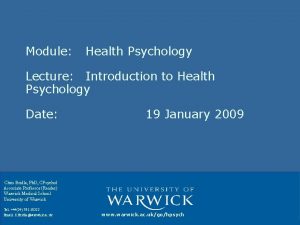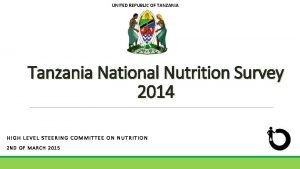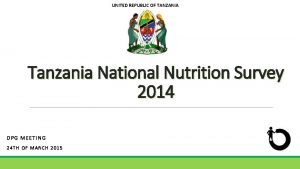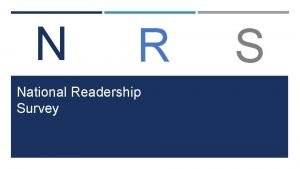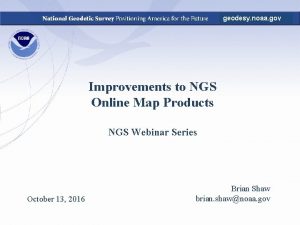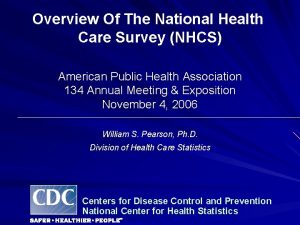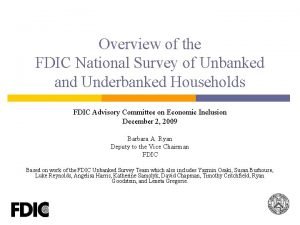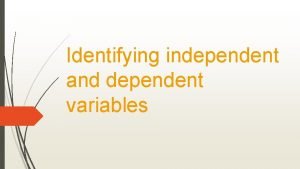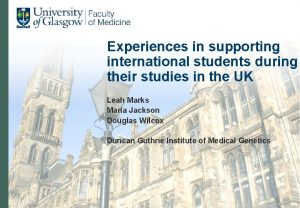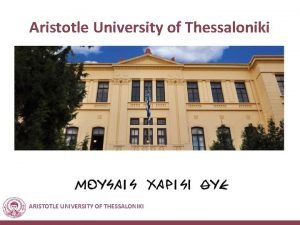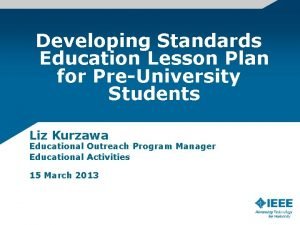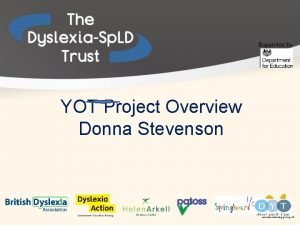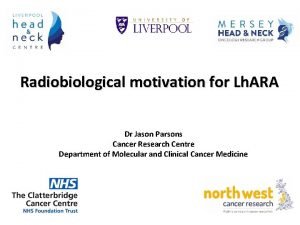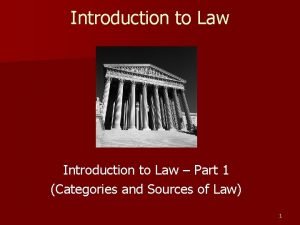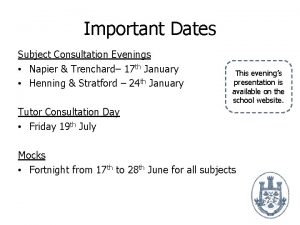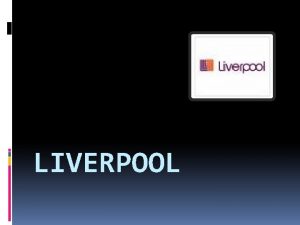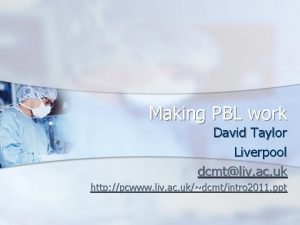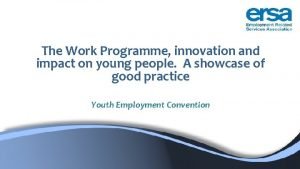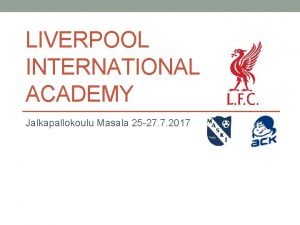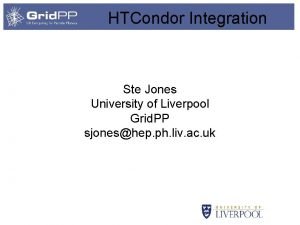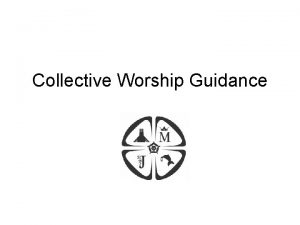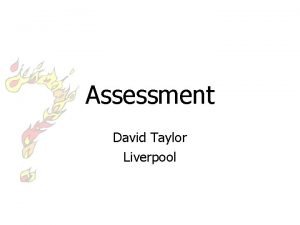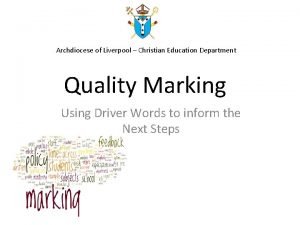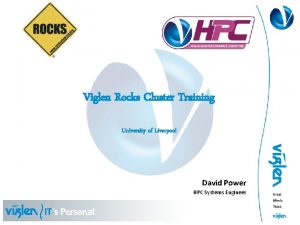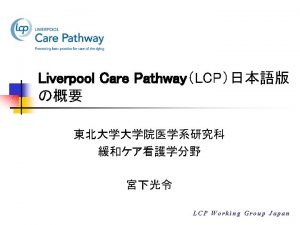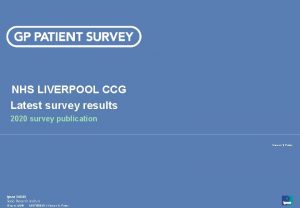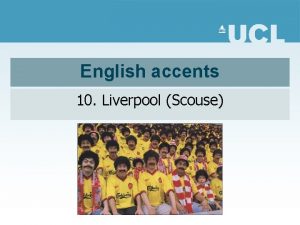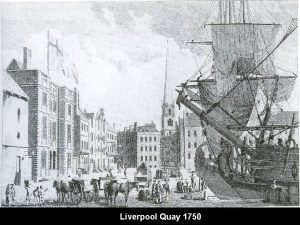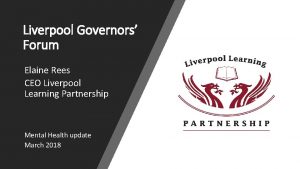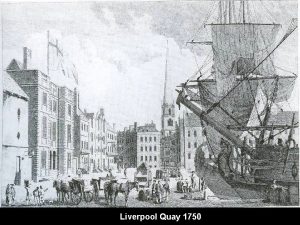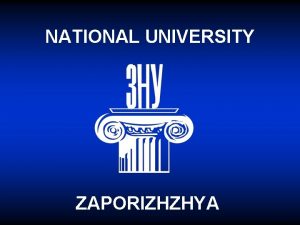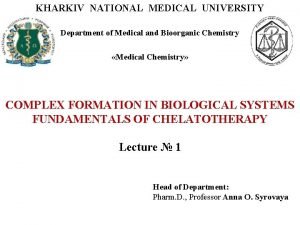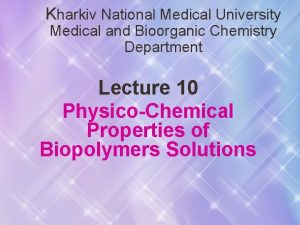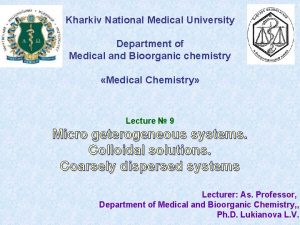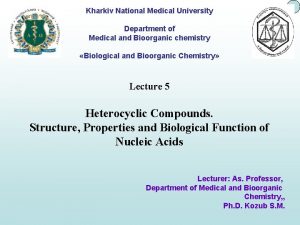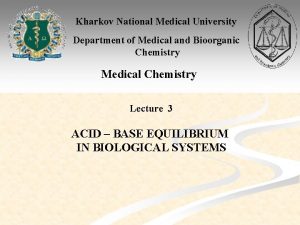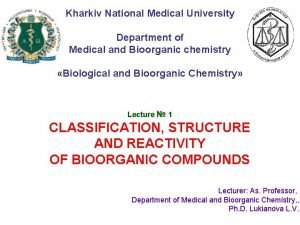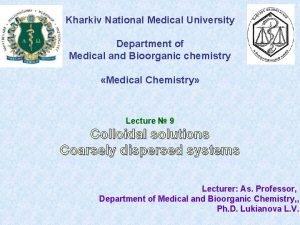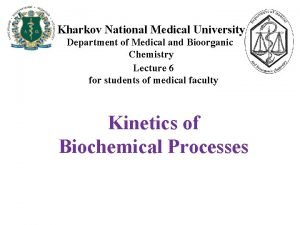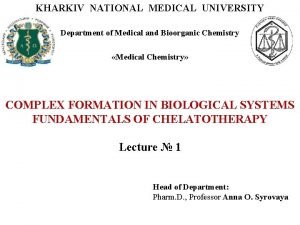National Students Survey University of Liverpool Liverpool Medical



















































- Slides: 51

National Students Survey University of Liverpool? Liverpool Medical School?

November 2011 Annual Review of MB Ch. B Programme National Students Survey


Key Recommendations 1. Curriculum § § § Ongoing Review Fit for modern NHS Patient Based

Key Recommendations 2. Problem-Based Learning (PBL). • Maintained and developed • Scenarios reviewed • Modernised

Key Recommendations 4. Human Anatomy Resource Centre (HARC) -Enhanced to support PBL -Demonstrations -Anatomy Demonstrators

Undergraduate/Postgraduate Interface John Earis University Hospital Aintree

Who is responsible for training medical students? UNIVERSITY OF COURSE

University Responsibilities • • Selection Decides the Curriculum (GMC) Decides teaching systems (PBL) Organises hospital/community placements • Assessment and award degrees • Pastoral Care

Who is responsible for Training Medical Students ? University AND NHS Trusts (Hospital and Community) What proportion of SIFT and the University Medical Student Funding directly benefits the students? ?

Approx % of time spent in Clinical Placements (Hospital in brackets) • • • Year 1 Year 2 Year 3 Year 4 Year 5 0% 60% (40%) 40 -60% 95% (80%) 95% (95%)

Foundation Doctors Views Newly qualified doctors' views about whether their medical school had trained them well: questionnaire surveys Judith Cave, Michael Goldacre, Trevor. Lambert, Kath Woolf, Alison Jones and Jane. Dacre BMC Medical Education 2007, 7: 38

% of Students who felt prepared for F 1 Year (Cave et al 2007)

% of Students Prepared for F 1 Year (Cave et al 2007) Liverpool

National student Survey: Guardian Rankings 2012

Mersey Deanery Liverpool Graduates Healthier Horizons

GMC Survey 2010 Mersey Deanery Same Hospitals Same Support Processes Same Trainers and Educational Supervisors

Key Indicators from the 2010 GMC Trainee Survey from Mersey Deanery Trainees Compared Across Deaneries • • Overall Satisfaction Clinical Supervision Handover Hours of Educational Supervision Procedural Skills Score Undermining Scores • Data from: GMC Annual Trainee Survey 2010. http: //reports. pmetb. org. uk/

Overall Satisfaction

Educational Supervision

Handover

Consultant Undermining Scores

Conclusions • Students are not satisfied with aspects of their course • When they become F 1 s they feel they are well prepared (shadowing PSP) • NHS is responsible for much of Medical Students training • Liverpool students well prepared but we could do better

National Students Survey University of Liverpool? Liverpool Medical School?

DREEM Questionnaire Data Sam Cocksedge F 1 Doctor WUTH

The DREEM Questionnaire The research questionnaire design utilizes a combination of qualitative and quantative techniques allowing for the methodology to be used to develop a non-culturally specific instrument that can be standardised and validated, enabling the DREEM study to be used globally. Roff S. (The Dundee Ready Education Environment Measure (DREEM) – a generic instrument for measuring students’ perceptions of undergraduate health professions curricula. Med Teach. 2005: 27; 322 -325)

The DREEM gives a global score out of 200 for the 50 items it contains. It has five sub-scales relating to; Students’ Perceptions of Learning ii) Students’ Perceptions of Teachers iii)Students’ Academic Self-Perceptions iv)Students’ Perceptions of Atmosphere v) Students’ Social Self-Perceptions i)

Questionnaires from 101 participants (approx. 1/3 of the year) were utilised and these were collected at random from 5 th year medical students through various methods. The collection of data was randomised by finding students to participate who were in compulsory University sessions

Students were asked to read the DREEM questionnaire’s 50 statements and use the Likert-type scale to respond. Each statement was then scored between 4 and 0 depending on the statement and how strongly the student agreed or disagreed. (Mc. Aleer S, Roff S. A practical guide to using the Dundee Ready Education Environment Measure (DREEM))

Results The average overall score for the questionnaires was 132. 9, within a range of 170 -64. • This indicates that there is more positive than negative perceptions regarding the course as a whole. 1. 0 -50 Very Poor 2. 51 -100 Plenty of Problems 3. 101 -150 More Positive than Negative 4. 151 -200 Excellent •

17 0 - 17 16 0 - 16 15 0 - 15 9 9 9 9 14 0 - 14 9 9 9 13 0 - 13 12 0 - 12 11 0 - 11 10 0 - 10 9 9 -9 90 -8 80 -7 70 -7 60 Average Score Distribution of Scores 35 30 25 20 15 Frequency 10 5 0

Where scored high or low?

Students’ Perception of Learning Overall average score - 31. 2/48 High Score (3 or above) – ‘I am encouraged to participate in teaching sessions’ ‘The teaching helps to develop my confidence’ Low Score (2 or below) ‘I am clear about the learning objectives of the course’

Student’s Perception of Course Organisers Overall Average Score - 28. 2/44 High Score – ‘The course organisers espouse a patient centred approach to consulting’ (average score 3. 1) ‘The course organisers get angry in teaching sessions’ (average score 3 – this statement was negatively marked, thus a high score in this area is deemed a positive remark). Low Score‘the course organisers are good at providing feedback to students’ (1. 7 average score)

Student’s Academic Self Perception Overall Average Score - 22. 6/32 High Score – ‘I am confident about passing the year’ (3. 4) ‘Last year’s work has been good preparation for this years work’ (3) ‘I have learned a lot about empathy in my profession’ (3. 2) Much of what I have to learn seems relevant to a career in healthcare (3. 1) Low Score – ‘I am able to memorize all I need’ (1. 7)

Student’s Perception of Atmosphere Overall Average Score - 31. 5/48 High Score – ‘There are opportunities for me to develop interpersonal skills’ (3) Low Score – None (below 2)

Student’s Social Self Perceptions Overall Average Score - 19. 7/28 High Score – I have good friends on this course’ (3. 4) ‘My social life is good’ (3. 2) ‘My accommodation is pleasant’ (3. 2) Low Score – ‘There is a good support system for students who get stressed’. (2)

Comparisons 1. 2. 3. 4. 5. 6. 7. 22 question survey from the NSS A generic questionnaire used across all subjects and universities there is some overlap between the two questionnaires. Overall I am satisfied with the quality of the course The teaching on my course Assessment and feedback Academic support Organisation and feedback Learning resources Personal development

Conclusions DREEM questionnaire has a more diverse question base; its 50 questions can cover a broader scope. A precise opportunity for reform utilising a tool that is designed specifically for medical education An accurate intervention overall by that school of medical education The precision for reform to alter student’s scientific task orientation and caring attitudes

Students’ Perspective Luke Hedges-Winslow 5 th Year Medical Student Academic Student Representative 2011/12

Things scoring badly in DREEM ‘I am clear about the learning objectives of the course’ ‘the course organisers are good at providing feedback to students’ ‘I am able to memorize all I need’ ‘There is a good support system for students who get stressed’.

‘I am clear about the learning objectives of the course’ PBL course – curriculum is within scenarios Students felt a lack of a clear curriculum This was raised with the faculty Over year developed a “Curriculum MAP” ◦ Online resource highlighting all elements of the course and how aspects of the curriculum fit together

‘the course organisers are good at providing feedback to students’ Students have raised issues in the past regarding feedback from exams, special study module (SSM) reports and clinical attachment Over past few years exam feedback has improved ◦ Individual feedback from practical (OSCE) exam ◦ Marking sessions of formative exam papers ◦ Individual feedback given from exam papers of strongest and weakest areas SSM – now only 4 instead of 6 over the 5 years – means convenors can be better selected to stick to deadlines on marking Clinical attachment – Educational supervisors who …………monitor progress

‘I am able to memorize all I need’ Clearly medicine is an extremely vast topic area and it will be difficult to memorize everything Course is structured so as to help students remember key topics by revisiting areas over the 5 year course

‘There is a good support system for students who get stressed’. This has been an issue over the past years. The personal tutor scheme – issues raised regarding actual contact with some tutors Faculty continue to work to improve the system – ◦ Educational supervisors to monitor progress ◦ Contact numbers/emails if you need to talk Liverpool Medical Students Society (LMSS) buddy system in place for first years LMSS Welfare representative

NSS student discussion Met with 15 students across the 5 year groups Discussed elements of the NSS 2010/11 which scored badly by students Some of the main points were similar to the DREEM findings Presented minutes to faculty

Results from discussion Felt more guidance was needed regarding various aspects of course ◦ The faculty have now set up supporting lectures for the elements needing more guidance Feedback issues raised ◦ Faculty have made alterations which students felt as steps in the right direction Basic science teaching poorly rated ◦ Faculty have organised more lectures and accommodated teaching sessions within the anatomy resource centre.

Does the faculty involve us? Academic representative ◦ Invited as members of various faculty bodies: Board of studies Admissions sub group Academic quality and standards committee Combined student parliament ◦ academic representative, year representatives from all years and faculty members involved with course ◦ Discuss problems across year groups in aim to find solutions and improve the course to suit the students needs

Closing notes… I have been within the medical school for 5 years and I can speak from experience that changes over the years have been positive There is a great relationship between the faculty and the students The faculty does listen to the students and continually works to improve the course to suit our needs

Zirva Ahmad – Year 5 student “Our medical school is one of the few that exposes us to the clinical world early, and allows us to have more exposure than nearly all medical schools around the country, putting us in better stead when we graduate and start working. Year by year improvements are being implemented, and faculty have listened to our feedback to tackle the problems we face. To list a few examples of these changes that will benefit us, they include electives being after finals (meaning we are able to apply our knowledge better!), fewer SSM's, actual anatomy teaching and more teaching in hospitals. ”

Thank you Any questions?
 National ambulatory medical care survey
National ambulatory medical care survey University of liverpool csd
University of liverpool csd M.gorky donetsk national medical university
M.gorky donetsk national medical university Seoul university medical school
Seoul university medical school Mongolian national university of medical sciences
Mongolian national university of medical sciences Abcd in acls
Abcd in acls Independent events formula
Independent events formula Lords grace christian church
Lords grace christian church Rizal carved the image of the blessed virgin mary on a
Rizal carved the image of the blessed virgin mary on a Color 02292008
Color 02292008 Acog medical student
Acog medical student Definition of health psychology
Definition of health psychology Pathology lectures for medical students
Pathology lectures for medical students Tanzania national nutrition survey 2018
Tanzania national nutrition survey 2018 Tanzania national nutrition survey 2020
Tanzania national nutrition survey 2020 National readership survey
National readership survey Ngs cors map
Ngs cors map National hospital care survey
National hospital care survey National survey of unbanked and underbanked households
National survey of unbanked and underbanked households National soil survey center
National soil survey center Singapore national nutrition survey
Singapore national nutrition survey How to know if independent variable
How to know if independent variable Matthias benzer
Matthias benzer Aristotle university of thessaloniki international students
Aristotle university of thessaloniki international students Pre university students age
Pre university students age California medical license for foreign medical graduates
California medical license for foreign medical graduates Gbmc infoweb
Gbmc infoweb Hepburn osteometric board
Hepburn osteometric board Torrance memorial medical records
Torrance memorial medical records Cartersville medical center medical records
Cartersville medical center medical records Yot liverpool
Yot liverpool Tony kenny liverpool
Tony kenny liverpool Jason parsons liverpool
Jason parsons liverpool Healthy homes liverpool
Healthy homes liverpool Vauxhall estates v liverpool corporation
Vauxhall estates v liverpool corporation Olly drove 56 km from liverpool to manchester
Olly drove 56 km from liverpool to manchester Pexagon shape
Pexagon shape Jean baptiste ebrard biografia
Jean baptiste ebrard biografia Liverpool rebranding
Liverpool rebranding David taylor liverpool
David taylor liverpool Amaze realise
Amaze realise N i p i liverpool ltd
N i p i liverpool ltd Ingeus liverpool
Ingeus liverpool Karen lewis liverpool
Karen lewis liverpool Aiirsm
Aiirsm Liverpool leiri
Liverpool leiri Ste jones liverpool
Ste jones liverpool Gary millar liverpool
Gary millar liverpool Archdiocese of liverpool
Archdiocese of liverpool David taylor liverpool
David taylor liverpool Archdiocese of liverpool education
Archdiocese of liverpool education David power liverpool
David power liverpool
